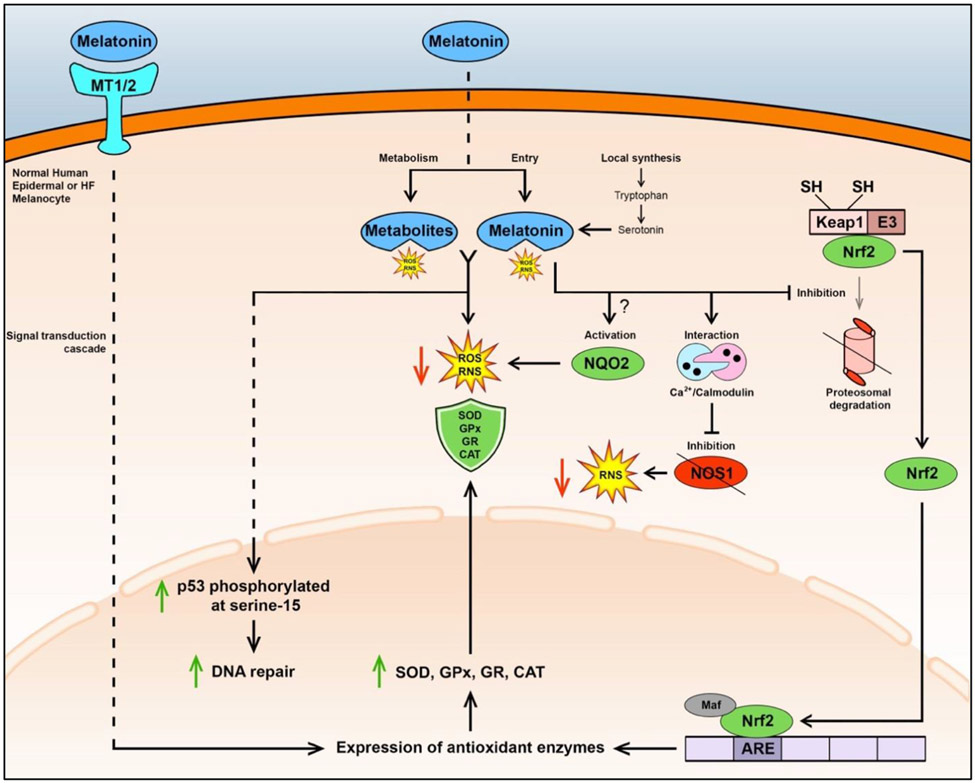Figure 3. Schematic summary describing antioxidant defense mechanisms by melatonin and its metabolites in human melanocytes.
Melatonin can bind to MT1 and MT2 receptors on the cell membrane, triggering a signaling cascade that leads to expression of antioxidant enzymes (e.g., SOD, GPx, GR, and CAT) for defense against ROS and RNS125,127. Melatonin may also be transported to the cytoplasm, but the detailed mechanism is not fully understood25. Furthermore, melatonin can be synthesized within these melanocytes. Melatonin and its metabolites, such as C-3HOM and AMK, can directly scavenge ROS/RNS125,126. Furthermore, melatonin and its metabolites, including AFMK, 6-OHM, 5-MT, and NAS, protect human epidermal melanocytes from UV-B-induced damage/apoptosis by enhancing phosphorylation of p53 at Serine 15, thereby leading to activated p53 accumulation in the nucleus and stimulation of DNA repair15. Melatonin may activate NQO2, thereby reducing oxidative stress134,135, however this mechanism’s presence in these melanocytes is not fully understood7. Melatonin at concentrations higher than 1 nM within the cell can interact with the calcium/calmodulin complex leading to inhibition of NOS1-mediated generation of RNS, with potential reductions in RNS levels25. Melatonin may also inhibit the Keap1-E3 ligase complex and the ubiquitination and proteasomal degradation of Nrf2, thereby preserving high Nrf2 levels that translocate to the nucleus. In the nucleus, Nrf2 may couple with Maf, a transcription factor, allowing Nrf2 to bind ARE on the promoter region of genes encoding antioxidant enzymes (e.g., SOD and GPx), resulting in their increased expression and activity, which then convert ROS and RNS to unreactive products1. Direct effects are shown by solid lines and multiple reactions and signaling are shown by dashed lines. Reactive oxygen species (ROS); reactive nitrogen species (RNS); superoxide dismutase (SOD); glutathione peroxidase (GPx); glutathione reductase (GR); catalase (CAT).

